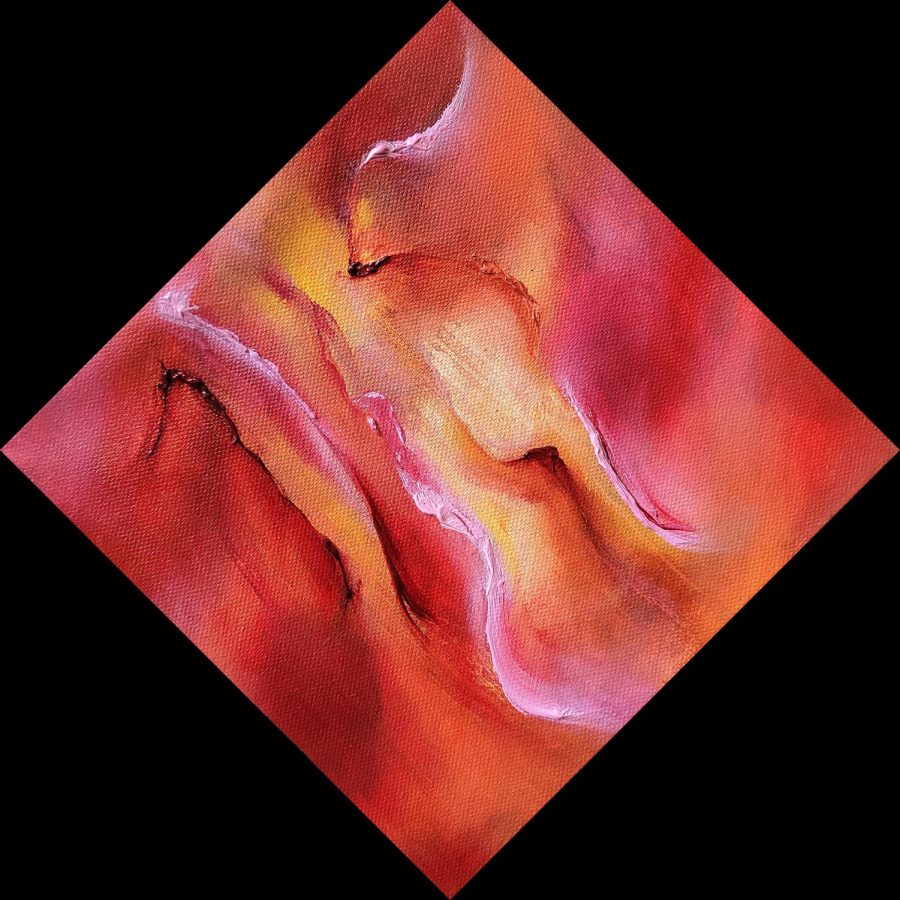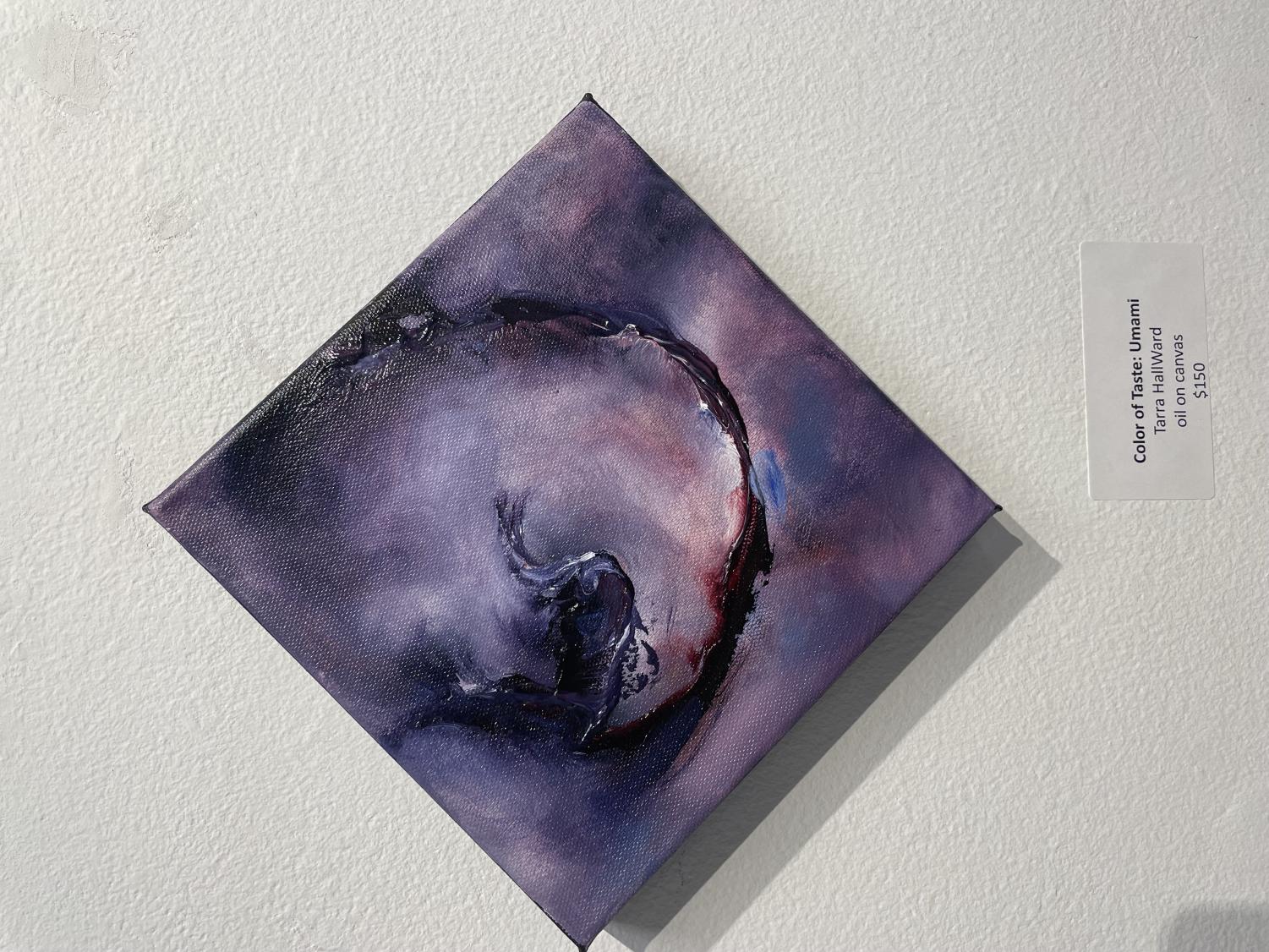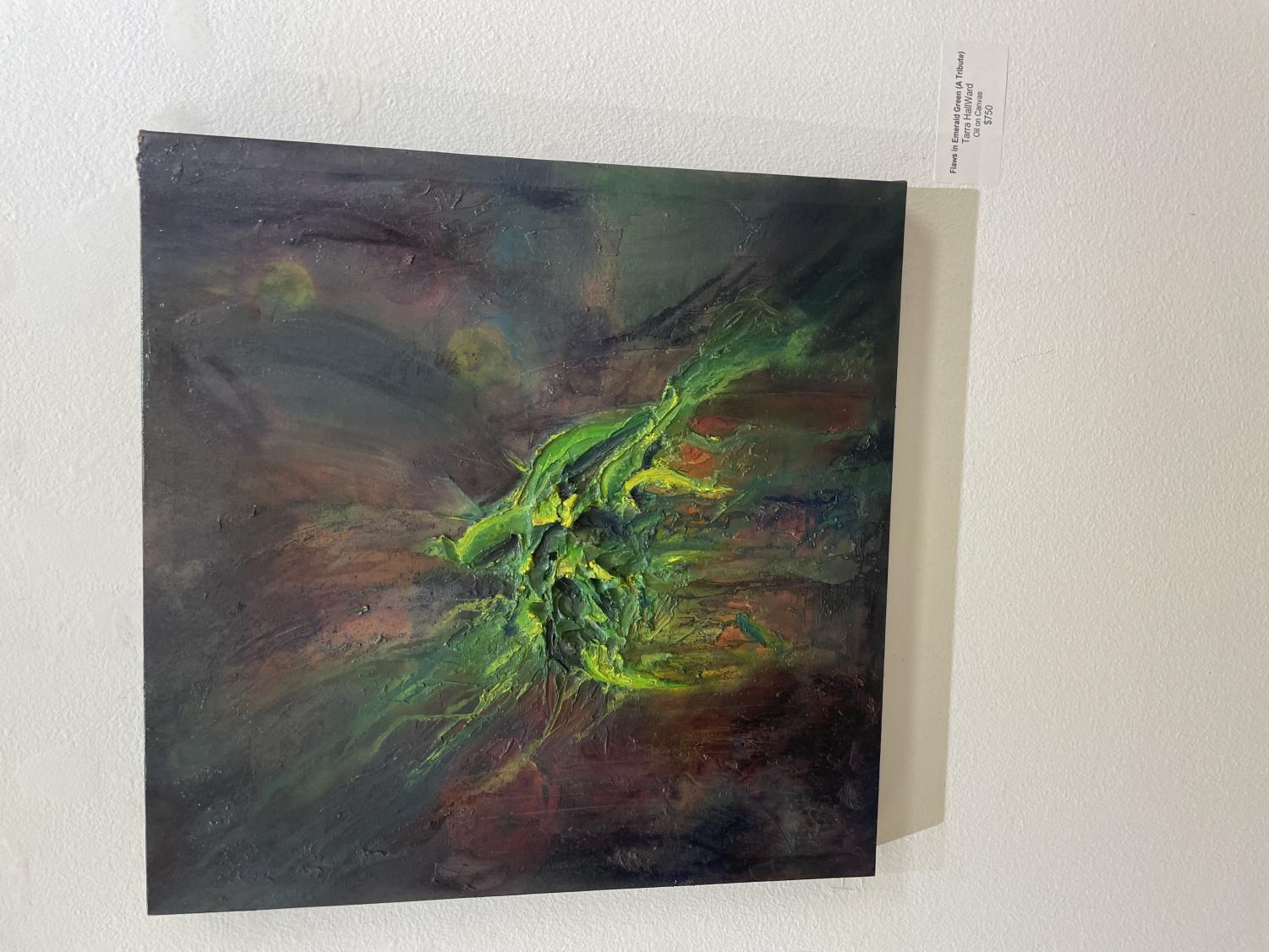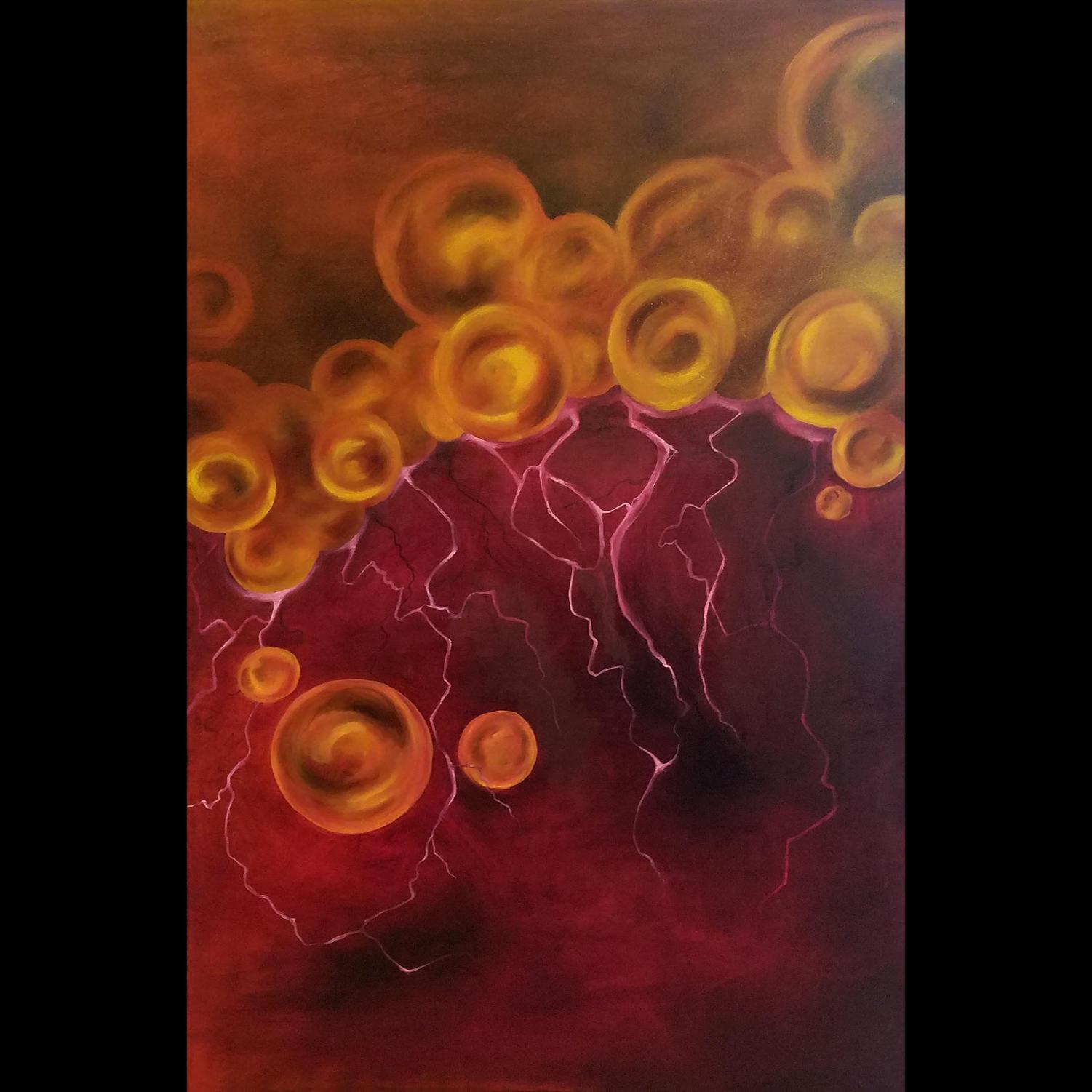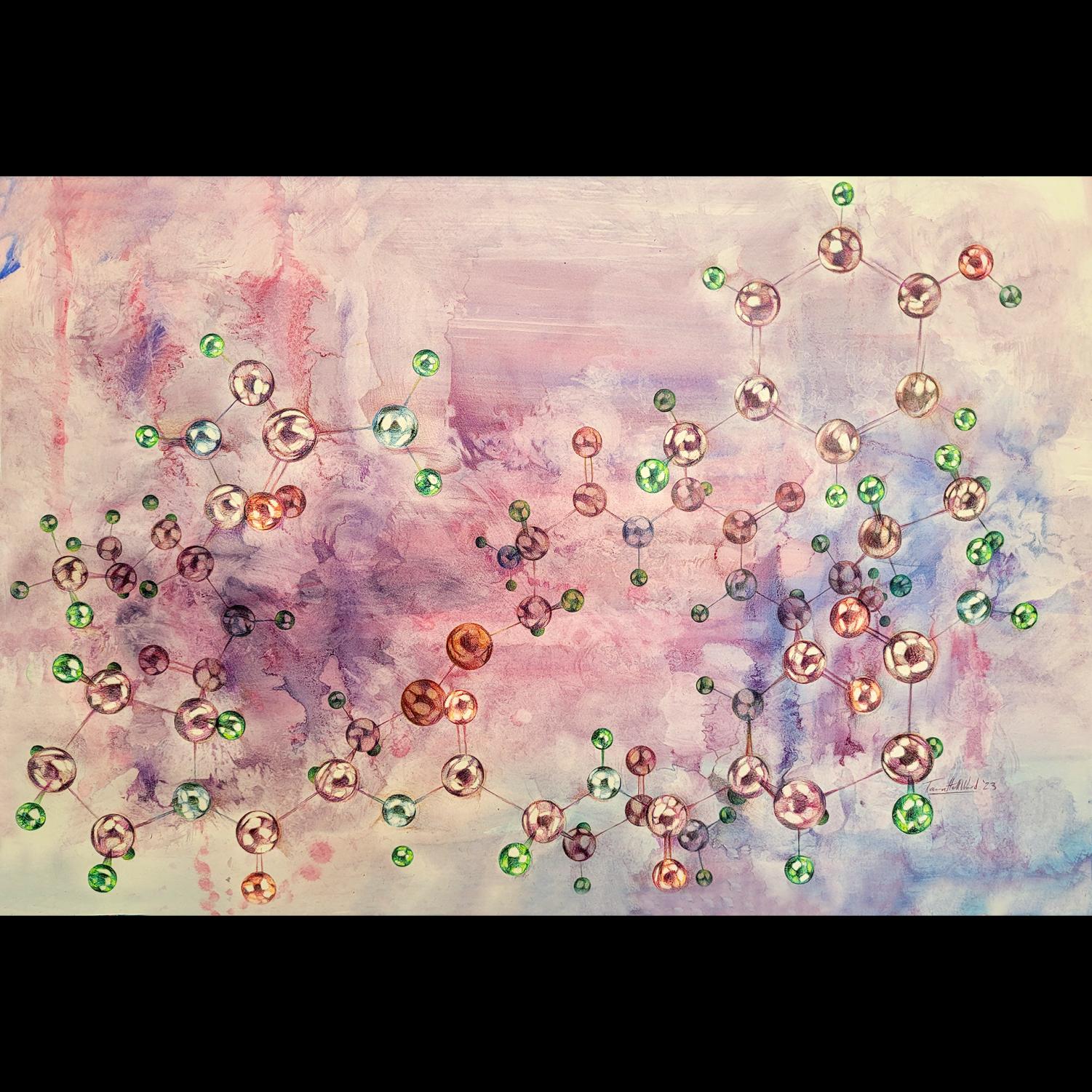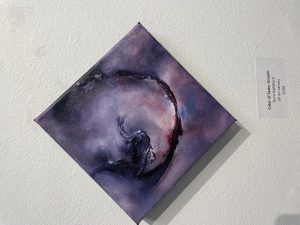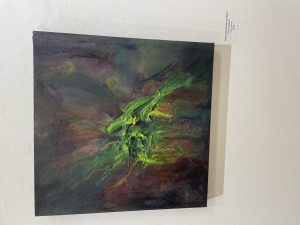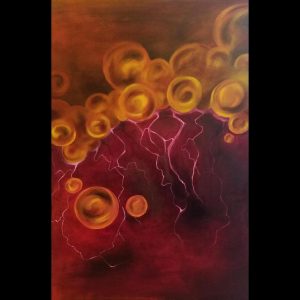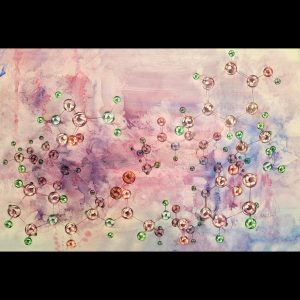Artist Tarra Hall-Ward mixes chemistry and art to create a reaction
April 12, 2023
Chemistry and art are coming together to create a reaction that the whole Ellensburg community can see. Local artist and CWU alum Tarra Hall-Ward will be featuring her work at the Clymer museum in downtown Ellensburg. Her art captures various invisible reactions in chemistry, presenting them through the visual medium of painting.
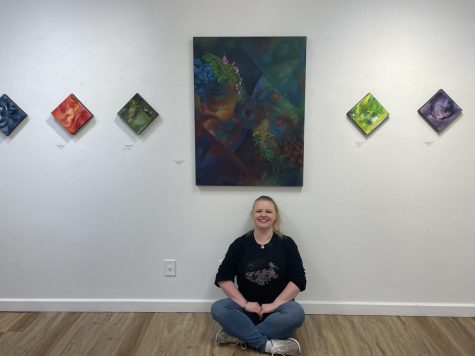
According to Hall-Ward, she was always interested in the field of art; her love of chemistry was brought out through her time working on her associate’s degree at Big Bend.
“I always knew I wanted to do something in art,” Hall-Ward said. “My first two years of college were at Big Bend community college in Moses Lake for my associate’s degree and it’s required that you take science classes and chemistry was the one that sounded the most interesting, and then when I took it I thought, ‘this is really cool,’ and I want to take more so I just kept taking more chemistry classes.”
During her studies, Hall-Ward discovered several potential avenues for her interest in combining art and science. According to Hall-Ward, she considered scientific and biological illustration, but found the focus of such a practice to be geared more towards bio-medicine rather than chemistry.
“My two degrees were basically me trying to figure out how I can combine these together in a way that’s not just pure science,” Hall-Ward said. “I’ve leaned more into the pure art side, but I’m still keeping the science element there.”
When she came to CWU in 2012 to double major in chemistry and art, Hall-Ward stated that she was able to further explore her goals and decipher what she wanted to achieve with her work. With guidance from her instructors at CWU and the McNair Scholars Program, Hall-Ward decided that she wanted to use art to translate chemistry concepts and reactions into a visual concept.
“There were a lot of professors I actually worked with,” Hall-Ward said. “One of the great things about being at Central was there was that room for me to explore these two combinations, and from what I’ve understood at large universities, that isn’t as possible.”
Hall-Ward further reflected on the staff at CWU that had a hand in helping guide her through her journey by offering her advice and direction, such as professor of art Maia Chachava, Chair of the Art and Design department and professor of art Gregg Schlanger and professor of inorganic chemistry Dr. Anthony Diaz.
“When I went to Gregg Schlanger, the head of the Art Department, and told him these were my interests, he told me I need to talk to Maia Chachava,” Hall-Ward said. “I would go talk in the Chemistry Department… and my advisor Anthony Diaz told me I need to talk to Dr. Peters… and all of them together told me I could do this and do that.”
Schlanger has been an instructor at CWU for 12 years. Schlanger worked with Hall-Ward when she was a student in his senior capstone class where she put together her senior exhibit, called “Entwined.”
“Having two majors is a lot of work,” Schlanger said. “She was very bright and intelligent, she took on challenges and went full force, but she also was a McNair scholar, so that added to knowing what she was capable of.”
Dr. Diaz served as Hall-Ward’s academic advisor and, according to Hall-Ward, a source of encouragement for her pursuits in art and science.
“She was one of our majors and had me for quite a few classes,” Diaz said. “The transition metals class was fun because in that class we spend a lot of time talking about the optical properties of metals, and she was totally fascinated by it because she was interested in the other side of it too.”
When Hall-Ward approached Diaz about her conceptual art, Hall-Ward stated that Diaz was able to help give her direction due to the nature of his research in optical and luminescent material.
“I got to see some of her work later on and thought it was cool,” Diaz said. “It’s an unusual combination to have those two things. We have had other students who have done similar things, but I would say not to Tarra’s level as far as the success of it.”
Since graduating from CWU in 2017, Hall-Ward has been a part of numerous group and solo exhibitions for her work. Given the unique nature of her art, Hall-Ward has looked to both artists and scientists for inspiration.
“There is no still life of chemistry reactions, it’s a very conceptual study,” Hall-Ward said. “I find artists’ work I admire and appreciate, and look at how are they painting, how are they drawing, how are they communicating their work in general and how can I learn from that to bring that communication into my own work?”
Hall-Ward’s artstyle has been labeled as ‘elemental realism’ by Clymer museum curator Matthew Lennon due to her use of elemental foundations to represent real-world concepts.
Hall-Ward continues to grow her skills as an artist through Gallery One’s workshops and exhibit opportunities. Her work can be seen at the Clymer museum in downtown Ellensburg until May 6. The Clymer museum also featured Hall-Ward’s work in their first Friday Art Walk on April 7.

